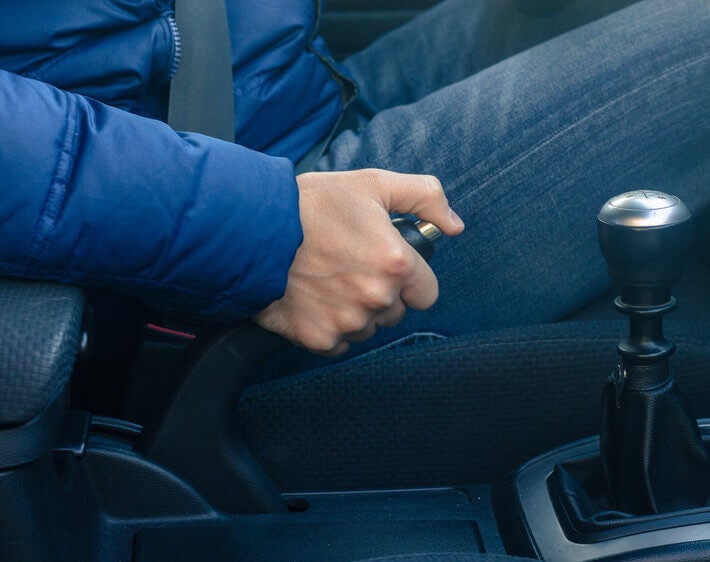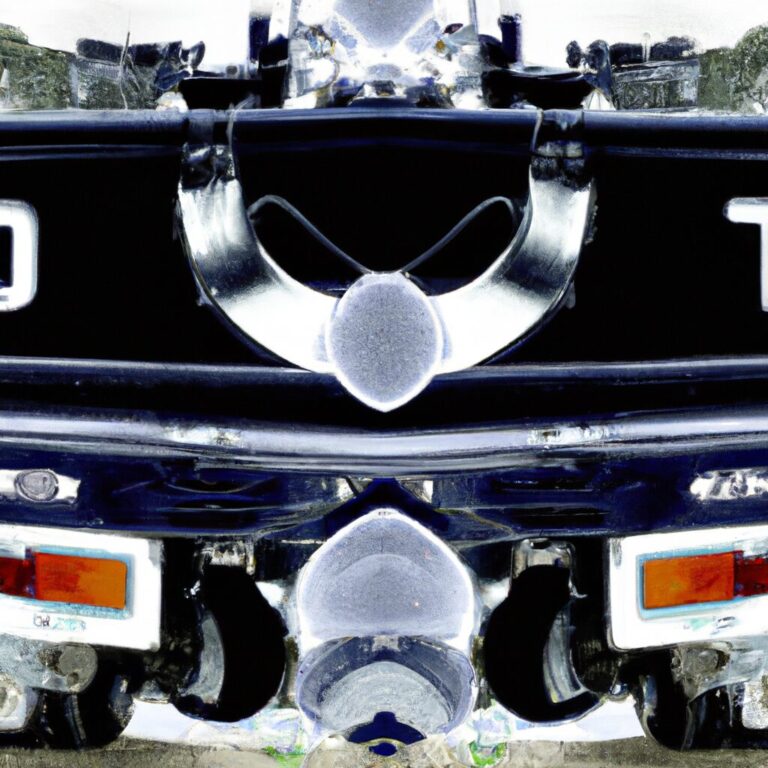How to Tell If Emergency Brake is Broken
To tell if the emergency brake is broken, check for unusual noises or lack of resistance when engaged. Additionally, inspect for any signs of physical damage like fraying cables or worn brake pads.
Emergency brakes should be regularly tested to ensure they are functioning properly and keeping your vehicle secure. If you suspect any issues, it’s important to have a professional mechanic inspect and repair your emergency brake promptly to avoid any safety risks while driving.
Ignoring potential brake problems can lead to dangerous situations on the road, so addressing any concerns early is crucial for your safety and the safety of others. Remember, a well-maintained emergency brake is essential for vehicle safety.
Signs Of A Broken Emergency Brake
If your emergency brake is broken, you may notice it’s not holding the vehicle in place when engaged, or there might be a lack of resistance in the brake lever or pedal. You may also hear unusual sounds or notice the brake warning light is illuminated on the dashboard.
Strange Noises
A broken emergency brake can often be identified by strange noises coming from the braking system. If you hear any unusual sounds like grinding, squeaking, or scraping when engaging or disengaging the emergency brake, it is a clear indication that there may be an issue.
Loose Or Tight Handle
Another sign of a broken emergency brake is a loose or tight handle. When you pull the emergency brake, it should have a firm and consistent resistance. If the handle feels loose or tight, or if it is difficult to pull or release, there may be a problem with the brake cable or the handle itself.
Dashboard Warning Light
One of the more obvious indications of a broken emergency brake is the presence of a dashboard warning light. Most vehicles are equipped with a warning light that illuminates when the emergency brake is engaged or if there is an issue with the brake system. If you notice the emergency brake warning light is consistently on or flashing, it is essential to have your vehicle inspected as soon as possible.

Credit: m.youtube.com
Testing The Emergency Brake
Testing the Emergency Brake:
Engaging The Brake
Step on the emergency brake pedal fully with your foot.
Evaluating Resistance
Check for any resistance or unusual feelings when pressing the pedal.
Vehicle Movement Test
- Bring your vehicle to a stop.
- Engage the emergency brake and try to move the car.
- If the vehicle moves, the brake may be broken.
Common Causes Of Emergency Brake Failure
Emergency brake failure can occur due to a variety of reasons, including worn brake pads, damaged cables or levers, fluid leakage, or rusted brake components. To determine if your emergency brake is broken, look for signs such as a loose or unresponsive brake lever, a sudden inability to hold the car in place on an incline, or a burning smell when engaging the brake.
Worn Brake Cables
Corroded Components
Malfunctioning Brake Pads
Emergency brake failure can occur due to various reasons. Let’s explore these common causes:Worn Brake Cables
Brake cables can become worn over time, leading to reduced effectiveness in engaging the emergency brake. Signs include increased slack in the cable.Corroded Components
Corrosion can affect various components of the emergency brake system, hindering proper functioning. Visually inspect for rust or degradation.Malfunctioning Brake Pads
Faulty brake pads can result in the emergency brake not engaging correctly. Listen for unusual noises or notice decreased braking ability. Identifying these common causes promptly can help ensure your emergency brake is working optimally.
Credit: www.firestonecompleteautocare.com
Steps To Take If Emergency Brake Is Broken
Discovering that your emergency brake is broken can be a worrisome situation. However, knowing the proper steps to take can help you address the issue effectively. In this section, we will discuss the three main steps to consider when your emergency brake is broken: seeking professional inspection, considering temporary solutions, and potential repairs or replacements.
Seek Professional Inspection
If you suspect that your emergency brake is broken, it is essential to seek professional inspection to accurately diagnose the problem. Qualified technicians are trained to identify issues with the emergency brake system and can provide expert guidance on the necessary repairs or replacements. Here are the steps to follow:
- Contact a reputable automotive repair shop or your car manufacturer’s service center to schedule an appointment for inspection.
- Explain the issue to the technician, mentioning that you suspect your emergency brake is broken and that you need a thorough assessment of the system.
- Bring your vehicle to the designated location at the agreed-upon time and date.
- Allow the technician to inspect your emergency brake system and provide you with a detailed report of their findings.
Consider Temporary Solutions
While waiting for your inspection appointment or if immediate repairs are not possible, there are a few temporary solutions that can help you ensure the safety of your vehicle. Here are some steps you can take:
- Do not rely solely on the emergency brake. Instead, park your vehicle on flat surfaces and engage the transmission into the “park” position.
- Chock the wheels using wheel chocks or blocks to prevent the vehicle from rolling when parked.
- Avoid parking on inclines or steep slopes where it may be difficult to keep the vehicle stationary.
- Stay alert and vigilant while driving, ensuring you apply the foot brake when stopped to prevent the vehicle from moving unexpectedly.
Potential Repairs Or Replacements
Once you have received professional inspection and a diagnosis for your broken emergency brake, you may need to consider potential repairs or replacements. Depending on the severity of the issue, the following steps may be necessary:
- Follow the recommendations provided by the technician regarding repairs or replacements.
- Obtain a detailed cost estimate for the necessary parts, labor, and additional services.
- Consider getting a second opinion from another reputable automotive repair shop.
- Based on the inspection report and estimates, make an informed decision on whether to proceed with the repairs or replacements.
Remember that addressing a broken emergency brake promptly is crucial for the safety of yourself and others on the road. By taking the appropriate steps outlined here, you can ensure the necessary measures are taken to resolve the issue effectively.
Importance Of A Functional Emergency Brake
The emergency brake, also known as the handbrake, is a crucial component of a vehicle’s braking system. It serves as a secondary parking mechanism and plays a pivotal role in ensuring vehicle safety, particularly in emergency situations. Understanding the importance of a functional emergency brake is vital for every driver, as a broken emergency brake can pose serious risks to both the vehicle and its occupants.
Secondary Parking Mechanism
An emergency brake functions as a secondary parking mechanism, providing an additional layer of security when the vehicle is parked. In situations where the regular brakes may fail, the emergency brake helps prevent the vehicle from rolling or moving unexpectedly, reducing the risk of accidents or damage. Additionally, it offers added stability on inclines or uneven terrain, making it an indispensable safety feature.
Emergency Situations
During emergency situations such as brake system failure or a sudden need to stop the vehicle, the emergency brake becomes a critical tool. It can help bring the vehicle to a halt, allowing the driver to gain control in potentially life-threatening scenarios. When the primary braking system malfunctions, a properly functioning emergency brake can make a significant difference in averting accidents and ensuring passenger safety.
Ensuring Vehicle Safety
Regular maintenance and inspection of the emergency brake system are essential for ensuring vehicle safety. Periodic checks for signs of wear and tear, proper tension, and functionality are imperative to guarantee that the emergency brake remains effective when needed. Ignoring the condition of the emergency brake can lead to hazardous situations, compromising the safety of the occupants and others sharing the road.
Credit: www.allfordmustangs.com
Frequently Asked Questions For How To Tell If Emergency Brake Is Broken
How Do You Know If Your Emergency Brake Is Bad?
You know your emergency brake is bad if it doesn’t hold the car in place or makes unusual noises while engaged.
How Do I Know If My Emergency Brake Cable Is Broken?
To check for a broken emergency brake cable, inspect for unusual noises or slack in the brake lever. Also, check if the car moves when the brake is engaged.
Can You Drive A Car With A Broken Emergency Brake?
Yes, you can drive a car with a broken emergency brake. However, it’s not recommended as the emergency brake is important for safety and controlling the vehicle during parking and emergencies. It’s best to get it repaired by a professional as soon as possible.
How Do I Know If My Emergency Brake Is Working?
To check if your emergency brake is working, park on a steep hill, engage the brake, and try to drive off. If the car doesn’t move, the brake is working. You can also inspect the brake cables and pads for wear and tear.
How Do I Know If My Emergency Brake Is Broken?
If your car rolls on an incline, there may be an issue.
What Are The Signs Of A Faulty Emergency Brake?
Look out for unusual noises, a loose handle, or a lack of resistance.
Can A Broken Emergency Brake Be Dangerous?
Yes, a malfunctioning emergency brake can compromise vehicle safety.
Conclusion
To sum up, it is crucial to keep an eye out for common signs indicating a broken emergency brake. By paying attention to unusual noises, difficulty in engaging or disengaging the brake, and reduced braking efficiency, you can quickly identify if your emergency brake needs attention.
Prompt and regular inspections are vital to ensure the safety of you and your vehicle. Remember, a functional emergency brake is essential for emergencies and parking situations alike. Stay safe on the road!

